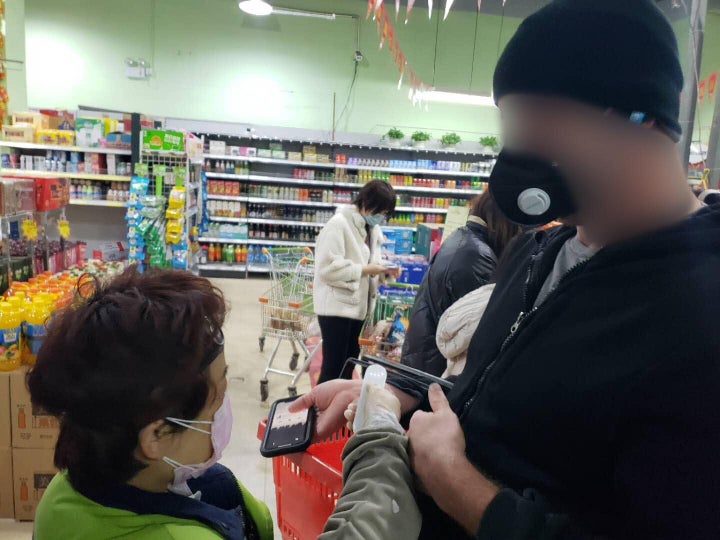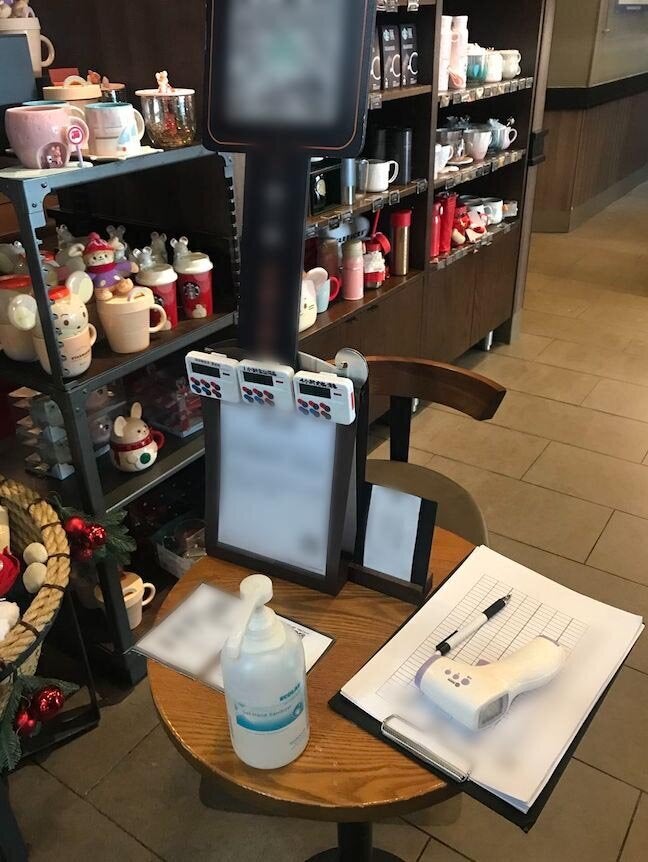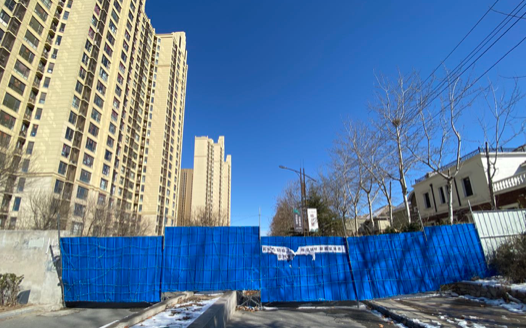
Editor’s note: HuffPost has chosen to anonymously publish the following first-person account by an American couple living in China. Editors do this only rarely and have done so on this occasion because of the potential risks to the authors if their real names were used. The Chinese government in recent weeks has expelled American journalists in response to an opinion piece and reprimanded a doctor who raised concerns about what was later identified as coronavirus (the doctor later died from the virus).
It is a strange time to be living in China. We are an American couple and have been living abroad for many years. We’ve spent the past several years in a large, northern city in China. Our experience in this country has been overwhelmingly positive ― we like living here. It has been fun, interesting and — yes — at times challenging. So while this current situation involving the coronavirus (COVID-19) and how it is affecting our daily lives has become unsettling, we want to be clear that for us, living in China has been more of a wonderful adventure than a struggle.
In January, we were looking forward to a quiet Chinese New Year break and had no plans other than to hang out with our friends. Just before the holiday, we started to hear about the new virus. We began to notice fewer people outside and those we did see were increasingly wearing masks.
When the break started, strangers told us emphatically that we should also put on a mask. We thought it was silly ― we knew that masks, while important for a doctor working directly with a sick person, were not necessary for every person in the city. And as far as we could tell, the virus was like a cold: only dangerous to people who were already sick.
As the New Year holiday progressed, the responses became more strident. Schools began closing and we learned that our break would be extended by two weeks. It all seemed like an overreaction to us, but one that we could manage with small get-togethers with friends, sleeping in a bit and spending lots of time in pajamas.
The first few days were fine — fun even. We were told not to gather in groups but felt we simply could not stay at home by ourselves for three weeks. We had a small surprise party for a friend’s birthday, met up with another friend at the mall, bought socks at H&M and went to Starbucks. But when we got to Starbucks, the employees wouldn’t let us in. Instead, we were told to order our drinks through the Starbucks app from outside the store. While we waited for our lattes, the employees took our temperatures and recorded our information at the door.

The following week the restrictions grew tighter and it wasn’t as easy for us to get out of our neighborhood. There had been rumors that Didi (a ride-hailing app like Uber) and delivery drivers were going to be banned from coming into our neighborhood. Then roadblocks went up on main thoroughfares. This was frustrating but we could still walk down side streets to get a taxi if we needed one.
Then walls were put up. They were on all the side streets of our neighborhood, blocking every way out except for two main entrances. The walls are metal, roughly 8 feet tall and painted bright blue. We saw them being installed, welded to rebar cemented into the street. They stretch from the concrete residential wall of a house, across the sidewalk and over the entire street to a concrete wall on the other side.
The first day the walls were up, someone found a seam between two of the metal sheets and bent back a small part, just big enough to slip through — probably with produce from the market on the other side. We knew we shouldn’t try to go through the opening but there was something reassuring about seeing that someone else also felt that the walls were more of an inconvenience than a necessary safety measure. But the next day, the hole was fixed and a tight crisscross of barbed wire had been added across the entire wall, with metal poles extending the barbed wire at the top.
The main entrances to our neighborhood are now heavily staffed with security guards wearing masks and smoking cigarettes. Everyone is checked when they come in ― temperature, license plate number and ID number are all recorded.

At about the same time the walls were put up, a curfew was imposed: no one in or out from midnight to 6 a.m. While we do not typically travel after midnight, it felt like an imposition.
Then a few days ago, everyone in the neighborhood had to register with a local committee and get a special pass that we now must show to get into our neighborhood. If you don’t have a pass, you cannot get in. Now, along with blocking Didis and deliveries, there can be no visitors.
We were notified that working from home would extend until at least March 9 — possibly longer.
Everything we read and hear maintains that the virus is not an imminent threat to us. Relative to the millions of people in our city, a tiny number of people have gotten sick; far fewer have died. But our effort to be rational about the threat does not really help. The scale of the response seems like an overreaction — or it suggests that things are much worse than we are being told. We have a lot of time on our hands to wonder which it is.
The psychological struggle has started to feel real. We began to try to figure out what self-care looks like when the only store that is open is a small grocery and you can’t see anyone besides those you live with. We set an alarm and get up each morning at a normal time for work. We continue to do our typical morning routines of showering and putting ourselves together. We’ve started meditating. We make sure to take a lunch break. We now go for runs every afternoon.
It’s not easy to maintain sanity, even with this self-care. On our runs, we go past the blocked streets, out to the checkpoint and back, always slightly worried that the guards will take our temperature and it will be elevated from running with a mask on. The prospect of being put in a more formal quarantine or worse ― sent to a local hospital ― is frightening. Our limited experiences with hospitals here have not instilled much confidence.
The rumors are a problem too. They say there is a case in the apartments near the grocery. They say there is a case in the apartments by the school. They say you can get 500 renminbi (rmb), the currency here, if you turn someone in who didn’t self-quarantine after visiting Hubei, where coronavirus originated.
We try to check all these rumors for validity. A lot of people have heard of the suspected cases. And we saw a picture of a notice in Chinese, confirming that people actually can get 500 rmb if they turn someone in. So at least some of the rumors are true.
It is especially hard because there appears to be no end in sight. Going back to work on March 9 seems distant and unlikely, even as the rate of new cases seems to be decreasing. Returning to the U.S. at this time is not feasible: With flights being cancelled, tickets are now around $2,000 — we would have to turn in a lot of people to get that much money! — and we would likely have to self-quarantine for two weeks there. Even then, we’re not sure people would want to see us for fear of contagion. If we did leave, we would be required to self-quarantine in China for an additional two weeks after we returned.
For now, the internet still works, though it is sometimes slow. We are particularly worried that we will eventually lose access completely. It feels like we are breathing through a narrow tube and someone could step on it at any time and cut us off.
Our house is nice and we enjoy each other’s company, and we understand there are people in the world living through far worse than this. Friends from abroad are frequently texting offering support. But cumulatively, all of these things are taking a toll. The masks, the rumors, the escalating restrictions, the vague fear that maybe it’s much worse than we think, and the inability to find out anything for certain are all exhausting. How long can we stay in our neighborhood, or just in our house? How long will meditating and running keep us from killing each other?
We’re continuing with our structured days. We try not to think too far into the future. We aim to alternate being anxious and reassuring each other. The overwhelming likelihood is that things go back to normal sometime in the coming weeks. But for now, we just don’t know.
Do you have a compelling personal story you’d like to see published on HuffPost? Find out what we’re looking for here and send us a pitch!